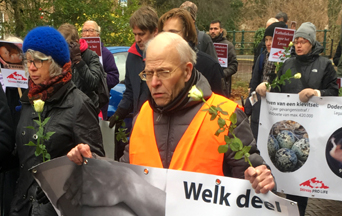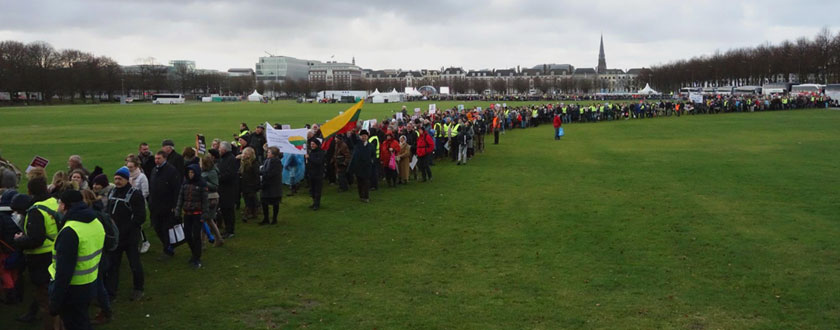
Pro-lifers in America often associate the Netherlands with very liberal positions on euthanasia, abortion and other moral issues. However, hopeful signs like the vibrant March for Life last December 9, show there are healthy reactions and reasons for hope.
Record Turnout
The pro-life movement is growing in the Netherlands. This was clearly seen with the record turnout of 14,000 participants for the March for Life in The Hague. Organized by the Protestant group, Schreeuw om Leven (Scream for Life), the December 9 protest also drew many Catholics. A leading liberal newspaper, De Volkskrant, wrote that the March demonstrated “a new self-awareness” of the Christian part of the Dutch population.
Leading politicians of the two small Christian political parties, SGP and ChristenUnie, were also present at the March and gave speeches that highlighted their commitment to the protection of human life from cradle to grave.
 Learn All About the Prophecies of Our Lady of Good Success About Our Times
Learn All About the Prophecies of Our Lady of Good Success About Our Times
Conspicuous by their absence was the influential Dutch Christian Democratic Party (CDA). Like their counterparts in other European countries, the Dutch Christian Democrats refuse to take a principled stand against abortion. The party has a painful history of collaboration in keeping abortion legal.
The Catholic Program
Catholic participation in the March was led by groups such as the pro-life organization Stirezo, founded by Jan Koopman (1919-1997), a priest of the Congregation of the Blessed Sacrament and early pro-life pioneer in the early seventies.
The Catholics started the day of the March with Holy Mass. During the sermon, Father Martin Kromman Knudsen, FSSP, contrasted the voluntary sacrifice of Our Lord’s blood on the altar of the Church, with the involuntary “sacrifice” of the unborn child’s blood on the altar of the abortion clinic.
The Mass was followed by a rosary procession through the center of The Hague to Malieveld, the starting place of the March.![]()
FREE e-Book: A Spanish Mystic in Quito
Speeches at Malieveld
At Malieveld, thousands of people gathered at noon with songs and prayer. Kees van der Staaij, an important political leader declared that he had never seen so many people together during a March for Life.
“More and more people, and especially more and more young people, have the courage to say: Abortion is no real help,” said Van der Staaij. He also found it hopeful to see that the seemingly “untouchable” abortion centers in the Netherlands have turned out to be not that untouchable. Recently a political scandal rocked the Netherlands when investigative journalists discovered that abortion centers had committed fraud with taxpayer’s money on a massive scale. Many were forced to close down.
“Who would have thought that these untouchable abortion centers are actually closing their doors at this moment?” said Van der Staaij, “I call that remarkable.”
Peter Smith, former UN Representative for the United Kingdom’s (UK) Society for the Protection of Unborn Children (SPUC) and the International Right to Life Federation also spoke. For the past twenty-three years Mr. Smith has lobbied at UN meeting in New York and around the world. He explained how the United Nations has included abortion as one of the human rights, even though it denies man’s most basic right: the right to life.
“But this right to abortion is a fake right,” Smith declared. “In other words, you cannot possibly turn a wrong, which is abortion, into a right.”
Government Restrictions
This year, blue flags were not allowed on the Malieveld during the March. These blue flags represent the 31,000 innocent, unborn children slaughtered in the Netherlands annually.

Authorities also changed the route of the March, forbidding the march through the city itself. As The Hague is the seat of the Dutch government, controversial political demonstrations are quite common. The fact the March was suddenly not allowed in the city reveals a bias against the pro-life demonstration. Nonetheless, national television coverage of the March was the opening news item of the night.
Hope for the Future
After the March, there was a Catholic program. One speaker was Mrs. Van der Wende, coordinator of Silent No More in the Netherlands. She told the audience about her own heart wrenching experiences of abortion after rape, which changed her into a very principled pro-lifer. Also, Hugo Bos, member of the Stirezo board, stressed the growing awareness of the right to life movement in the Netherlands and the rising numbers of people walking in the March for Life.
The pro-life movement is alive and growing in the Netherlands. It is a reason for hope for the future.

